
Featured news
04 Mar 2022
DNA barcoding identifies endangered shark species secretly added to pet food
DNA barcoding identifies endangered shark species secretly added to pet food, shows a new study published in Frontiers in Marine Science

Featured news
04 Mar 2022
DNA barcoding identifies endangered shark species secretly added to pet food, shows a new study published in Frontiers in Marine Science
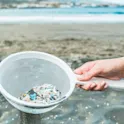
Psychology
28 Feb 2022
By Colm Gorey, Science Communications Manager Image: DisobeyArt/Shutterstock.com Each month, Frontiers shines a spotlight on some of the leading research across a wide range of topics. Here are just some of the highlights that resonated strongly with readers on our news site in the month of January. Likely energy source behind first life on Earth found ‘hiding in plain sight’ Life on Earth arose roughly 4bn years ago. How it arose, and from what energy source is of interest to everyone because we humans like to know where we come from. The team of Prof William Martin at the University Düsseldorf’s Institute of Molecular Evolution investigates early evolution. In a recent paper in Frontiers in Microbiology, they argue that the source of energy required at life’s origin has been hiding in plain sight: under the environmental conditions at deep sea hydrothermal vents, hypothesized to have been the sites where life on Earth originated, the central biosynthetic reactions of life do not require an external energy source. Article link: https://www.frontiersin.org/articles/10.3389/fmicb.2021.793664/full 2. How do we define a well-lived life? First scientific evidence helps us get closer to an answer A transition, such as the beginning of a new year or entering the second half of life, […]
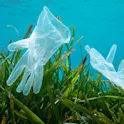
Environment
10 Jan 2022
More than half of plastics in Mediterranean marine protected areas originated elsewhere, finds a new study in Frontiers in Marine Science
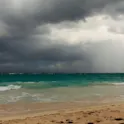
Climate action
17 Dec 2021
By Mischa Dijkstra, Frontiers science writer Image credit: Anna Ok / Shutterstock.com Scientists use complex mathematical modeling of sea states, sea level rise, and local geography to predict the permanent loss of between 56 and 65% of the current area of sandy beaches in the Balearic Islands by the end of the 21st century, depending on the global warming scenario. During extreme weather conditions such as the strongest storm surges with the highest waves, between 84 and 86% of the beach area will be flooded. The impact of the climate crisis on coastal areas has been well documented, but new research has shown the impact it may have on the beaches found on the Balearic Islands in the north-western Mediterranean. Findings published in Frontiers in Marine Science showed that the archipelago – heavily reliant on tourism – could lose most of its beaches. “Much of the income of touristic regions in the Mediterranean comes from beach and sun tourism: more than 25% in the case of the Balearic Islands. This means that it is essential to predict the fate of these beaches under climate change,” said first author Miguel Agulles, a PhD student at the Oceanographic Center of the Balearic […]
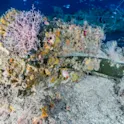
Featured news
16 Dec 2021
By Mischa Dijkstra, Frontiers science writer The ship’s ram as it was found on the seabed off Sicily at a depth of nearly 90m. Image credit: K. Egorov / Società per la Documentazione dei Siti Sommersi – Global Underwater Explorers (SDSS-GUE) Italian researchers found amazing community of 114 species of invertebrates on priceless archeological artifact, including ecological ‘constructors’, ‘binders’, and ‘dwellers’ On March 10, 241 BCE, a sea battle took place near the Aegadian Islands off northwestern Sicily. A fleet equipped by the Roman Republic destroyed a fleet from Carthage, ending the First Punic War in Rome’s favor. But scientists have now shown that this destruction and carnage utimately made a a rich flowering of marine life possible. In a recent study in Frontiers in Marine Science, they reported finding no fewer than 114 species of animals, coexisting in a complex community, on a ship’s ram from a Carthaginian ship sunk in the battle. This is the first study of marine life on a very ancient wreck. The ram is not only a priceless archeological find, but also a unique window into the processes by which marine animals colonize empty sites and gradually form mature, stable, diverse communities. “Shipwrecks are […]
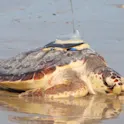
Environment
26 Oct 2021
By Tania Fitzgeorge-Balfour, Science writer A tracked loggerhead turtle on the beach with satellite tracker attached to its shell. Image: Oceane Cottier Aquarium La Rochelle SAS Turtle habitat boundaries should be updated to include European waters, suggests a new study tracking stranded turtles rescued from the French coast. Their movements after release back into the Bay of Biscay appear related to their size, with larger individuals swimming westwards towards their birth home in the US or Africa, and smaller individuals potentially trapped in the region for winter. These findings will inform strategies to ensure stranded turtles survive after their release. The documented habitat boundaries of the loggerhead, Kemp’s ridley and green turtles are questioned by a new study suggesting that stranded turtles rescued from European French Atlantic and Channel waters could be visiting the area to forage for food. Published in Frontiers in Marine Science, satellite tracking data reveals that while some turtles may be able to return home, after their rehabilitation and release to Florida in the US, or Cape Verde off the African coast, younger individuals are at risk of being trapped in the region. “Stranded turtles that were tracked swimming westwards presumably towards their birth homes, after […]
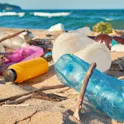
Environment
04 Oct 2021
Research in Frontiers in Marine Science reveals how much plastic debris is currently floating in the Mediterranean Sea
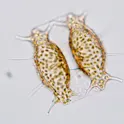
Featured news
17 Aug 2021
By Tania Fitzgeorge-Balfour, science writer Example of marine dinoflagellates (Dinophysis sp., not the species studied in the paper). Image credit: Rattiya Thongdumhyu/Shutterstock.com Plastic pollution is not just a problem for larger marine animals. Dinoflagellates, which are single-celled marine predators, can also ingest microplastic which in turn limits their growth and consequently their overall abundance. This has implications for the larger animals that feed on these microscopic predators, in terms of available food and the transfer of energy up the food chain. Microscopic marine predators can ingest microplastic, which in turn lowers their growth and overall abundance, finds a recent study published in Frontiers in Marine Science. This has implications for the larger marine animals that feed on these tiny predators, both in terms of available food and the transfer of energy up the food chain. “The plastic pollution of our oceans isn’t just affecting whales and sea turtles, it also impacts the small, microscopic animals towards the bottom of the food chain,” says Susanne Menden-Deuer, coauthor of this research and a professor at the Graduate School of Oceanography, University of Rhode Island, US. “Our study shows that some single-celled marine predators called dinoflagellates ingest microplastic particles, and when they do, […]
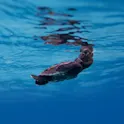
Featured news
02 Aug 2021
Baby marine turtles’ stomachs are full of harmful plastic debris, suggests new study in Frontiers in Marine Science

Climate action
19 Jul 2021
Three key habitat-building corals face worrying future due to climate crisis, shows new study in Frontiers in Marine Science

Featured news
15 Jul 2021
First observations of coral cells and free-living algae physically interacting: Frontiers in Marine Science

Featured news
21 Apr 2021
Citizen scientists can play video game to help research on coral reefs: Frontiers in Marine Science

Life sciences
09 Apr 2021
Charting long-distance migration of loggerhead turtles: Frontiers in Marine Science

Featured news
18 Mar 2021
Marine ecosystems are endangered by an increasing number of coastal development projects. A new study shows for the first time that bottlenose dolphins may adapt to anthropogenic disturbance under some circumstances. The findings draw attention to the need for proper management of coastal construction sites. By Suzanna Burgelman, Frontiers Science writer Social interaction between two bottlenose dolphins. Image: Ann Waver Bottlenose dolphins learn to cope with coastal construction activities. That is the conclusion of a study published in Frontiers in Marine Science. The study is the first to provide a longitudinal perspective on the cumulative impacts of coastal construction. Dolphins adapted to the construction of a bridge by establishing feeding locations outside of the construction zone, and by shifting the timings of behaviors to a time in the day when construction activities were minimized. Coastal development practices negatively impact marine wildlife Marine coastal development is characterized by unsustainable practices. Coastal development exposes 47% of coastal marine mammal species and 51% of core marine mammal habitats to extensive anthropogenic disturbance. Human activities along coastlines and in marine habitats can lead to pollution, vessel strikes, entanglement, by-catch, and debris ingestion, which disturb and harm marine wildlife. Read original article Download original article (pdf) […]

Earth science
15 Feb 2021
Prior research has suggested that the watery depths below the Antarctic ice shelves are too cold and nutrient poor to sustain much life. But a new study from British Antarctic Survey reveals the discovery of a colony of sponges and other animals attached to a boulder on the sea floor – challenging researchers’ understanding about the existence of life in extreme environments. British Antarctic survey camera travelling down the 900-meter-long bore hole in the Filchner-Ronne ice shelf. (marine creature pictured is unrelated to the discovery) CREDIT: Dr Huw Griffiths/British Antarctic Survey By K.E.D Coan, science writer/British Antarctic Survey Far underneath the ice shelves of the Antarctic, there’s more life than expected, finds a recent study in the journal Frontiers in Marine Science. During an exploratory survey, researchers drilled through 900 meters of ice in the Filchner-Ronne Ice Shelf, situated on the south eastern Weddell Sea. At a distance of 260km away from the open ocean, under complete darkness and with temperatures of -2.2°C, very few animals have ever been observed in these conditions. But this study is the first to discover the existence of stationary animals – similar to sponges and potentially several previously unknown species – attached to a boulder […]
Get the latest research updates, subscribe to our newsletter